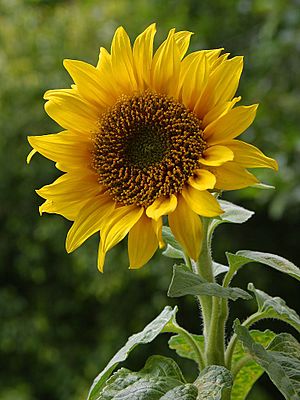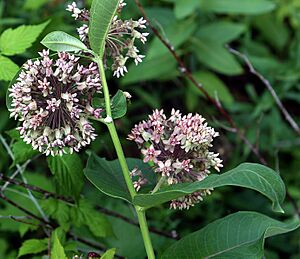Forb facts for kids

A forb is a type of flowering plant that does not have a woody stem. This means it is not a tree or a shrub. Forbs are also different from grasses, sedges, and rushes. They are often found in grasslands and in the understory (the plants growing under taller trees) of forests.
Forbs are important in biology, which is the study of living things. They are also key in ecology, which looks at how living things interact with their environment.
What Does "Forb" Mean?
The word "forb" comes from an old Greek word, phorbḗ. This word means "pasture" or "fodder". Pasture is land where animals like cows graze. Fodder is food for farm animals.
Sometimes, you might see the word spelled "phorb." This is an older way to spell it. In the past, this term sometimes included grass-like plants too, but today it does not.
Forbs and Plant Groups
Forbs belong to a special group called a "guild" in ecology. A guild is a collection of different plant species that grow in similar ways. They might have similar shapes or needs.
In ecology, belonging to a guild can be more important than how plants are related by their family tree (their taxonomy). It helps scientists understand how plants share resources in an environment.
Finding Forbs in Nature
The term "forb" is also used in popular guides to wildflowers. It helps people tell wildflowers apart from other plants. These guides often separate plants into categories like forbs, grasses, sedges, shrubs, and trees.
Many common plants are forbs. Some good examples include clovers, sunflowers, daylilies, and milkweed. These plants add a lot of color and variety to natural areas.
See also
 In Spanish: Forbia para niños
In Spanish: Forbia para niños


